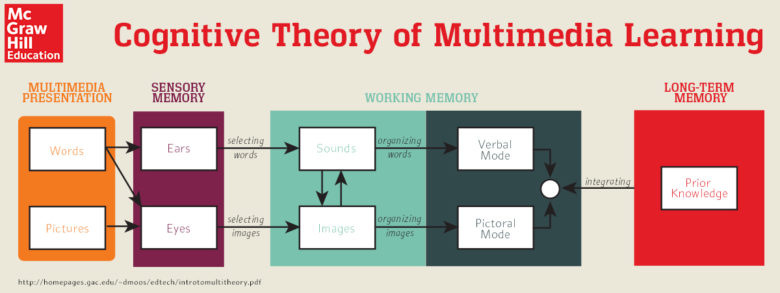Cognitive Theory of Multimedia Learning
Give those Video Lessons in Mathematics your Freedom to Learn
Let’s recognize Mayer and Moreno, (2003) the Cognitive Theory of Multimedia Learning builds on the Cognitive Load Theory, noting that working memory has two channels for information acquisition and processing: a visual/pictorial channel and an auditory/verbal processing channel. Although each channel has limited capacity, the use of the two channels can facilitate the integration of new information into existing cognitive structures. By using both channels, working memory’s capacity is maximized—but either channel can be overwhelmed by high cognitive load. Thus design strategies that manage the cognitive load for both channels in multimedia learning materials promise to enhance learning. In addition to the two key assumptions of dual-channel processing and limited working memory capacity, the Cognitive Theory of Multimedia Learning also articulates the goal of any learning as “meaningful learning,” which requires cognitive processing that includes paying attention to the presented material, mentally organizing the presented material into a coherent structure, and integrating the presented material with existing knowledge. See more theories associated with learning through videos, particularly in the application of Mathematics Learning @ https://cft.vanderbilt.edu/guides-sub-pages/effective-educational-videos/
In view of the above theory, this article strongly imparts that Math video lessons created, customized, and utilized to a target group of students must be used as a major part of the classroom instruction along with other resource material say Textbooks and Modules for teaching and learning any particular Mathematics topic.
As students, your objective is to reinforce your deeper understanding of a topic before, along with and after every classroom lectures, instructions, and hands-on activities. A “videolar instruction’ along with modular instruction can greatly help you be energized and engaged in the hands-on learning processes. Videos are instructional media that are compelling and generate a greater amount of interest and enjoyment. Videos in Mathematics created by your teachers provide clear concept clarity, as everything can be visualized and explained in detail. In any style, visuals and audio created thereat are always expected to be more educational, informative, interesting, and engaging.
More importantly, this method of teaching and transpiring the lesson content can be done repeatedly without time-bounded. You can replay as many times you want until you can master the lesson presented.
Videos in Mathematics elsewhere are effective teaching tool media. When incorporating videos into your lesson, it’s important to keep in mind the three key components of cognitive load, elements that impact engagement, and elements that promote active learning. Luckily, consideration of these elements converges on a few recommendations:
Look for videos that are brief that target on your learning goals.
Choose a video which audio that suits your clear understanding and clear visual presentations
Content is very essential. Not much of the entertainment part to maximize the grasps of concepts form the video
Select videos in a context of active learning by looking at guiding questions interacted with your topic on hand for further instruction and steps that will guide you through
I strongly recommend asking your Math teacher to provide you video links for lesson enhancement or suggest to convert Math topics into great videos and compile them up for use every now and then. This way those Math video lessons give you time and place freedom to learn at your own pace.
For grade 9 students, don’t be behind from one hot topic, acquire more knowledge about the Gradient of a Line, please click the video below:



Comments
I love this article!